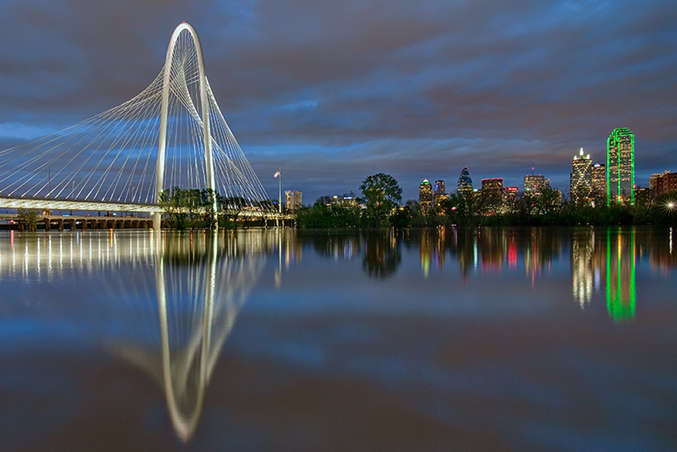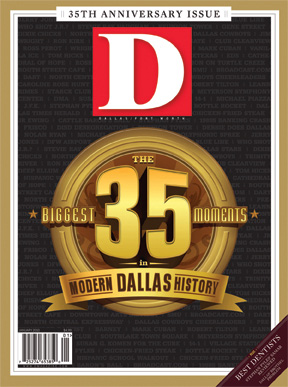There it was: the Trinity River. Mostly, we had used it to carry treated sewage (untreated originally), to divide north from south, and to give the protesters a campsite during the 1984 GOP Convention. (That was our little joke.) But I had hiked in the lower Trinity’s Rochester Park with famed environmentalist Ned Fritz and had come away with the feeling that the Trinity could be so much more.
Dallas knew about San Antonio, Fort Worth, Austin, and even San Angelo, and how they had converted their downtown rivers into positive features, statements about their cities. We knew this on a theoretical basis, but we didn’t really believe it could happen in Dallas. Then Vision Dallas, sponsored and funded by the Dallas Morning News, offered a view of what Dallas could be. In 1992, I asked Dallas visionary Robert Hoffman to organize and lead the Dallas Plan, so named by Deanne Kirby, my assistant in the mayor’s office. She left me a phone message, “That nice man Robert Hoffman called again, something about a Dallas plan.”
The Dallas Plan was founded on the premise that Dallas’ dominant features will shape our future: DFW Airport and Love Field, residential neighborhoods, downtown, Fair Park, and, most important, the Trinity River. They will be major assets or major liabilities, but they will not be neutral. The second premise was that we in Dallas could shape our own future. And third was that the citizens had to do it, not City Hall, or the federal government, or downtown business, or urban planners.
Thus thousands of citizens began to plan and dream and figure it out collectively. The Trinity wasn’t the only part of the Dallas Plan, but it fast became the central feature. And the citizens of Dallas began to feel the excitement. That was followed in 1994 with the more formal 400-person Trinity River Corridor Citizens Committee, supported and led by my successor, Ron Kirk. That report, adopted by the citizens in 1998, was modified once more by Laura Miller in 2003.
The Trinity Project is big. It’s a major parkway, parks and recreation, signature bridges. I don’t know what the future will bring, but the Trinity will be an important and positive part of it.
Steve Bartlett is president and CEO of the Financial Services Roundtable in Washington, D.C. He was mayor of Dallas from 1991 to 1995.






